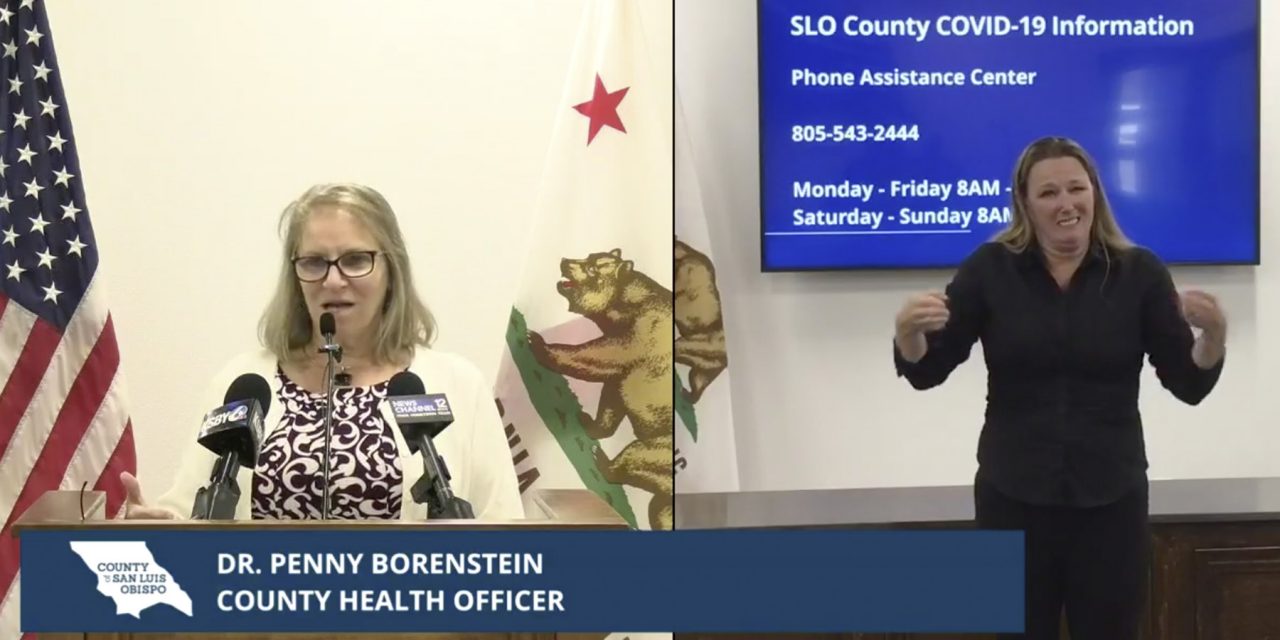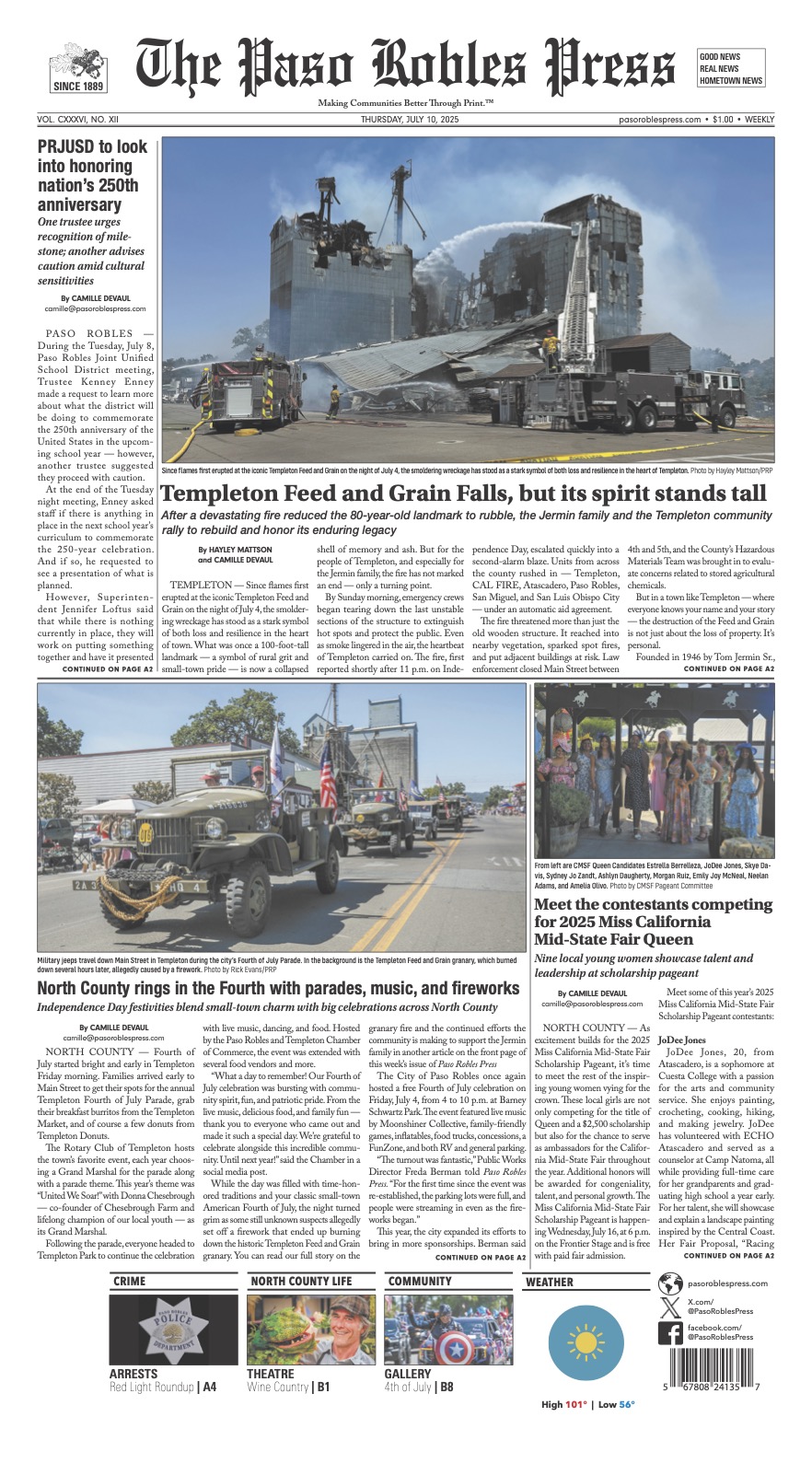The County addressed concerns and questions regarding reopening of the community
Following the State’s press conference on Monday, where Governor Gavin Newsom illuminated partial details of the plan to reopen California, the County of San Luis Obispo presented local information at the regularly scheduled briefing.
SLO County Public Health Officer Dr. Penny Borenstein presented the current statistics for the county and provided clarification on the information released in the SLO County START Guide.
Over the weekend, including a single case reported Monday, there were a total of 14 new cases in SLO County. Two of the seven hospitalizations were discharged, leaving five in the hospital, including three in the ICU.
Of the 202 total cases confirmed since testing began, 156 are deemed fully recovered. As of last week, the parameters for “fully recovered” were extended from seven days with no symptoms to 10 days — which effectively slows the reporting of recovered cases.
Currently, 40 cases are recovering from home.
As testing increases, and positive case counts increase, the metric of health that the county officials will focus on is hospitalizations and critical care.
“We are hopeful that we will retain the low number we have in our critical care and our hospitals,” Borenstein said.
Monday, the two new testing sites began — Paso Robles and Grover Beach — delivering up to 264 tests daily during 12 hours of operation. The increase in testing is expected to produce an increase in positive case counts.
“Because we are expanding our testing, we may well see positive cases coming out,” Borenstein said. “We said we would be looking at the number of cases, but more importantly, the severity of cases and our hospitalization rates.”
With preventative measures in place, increased testing, and healthcare capacity at hospitals, the State emerges from its shelter and with that causes a bit of confusion over what businesses are considered safe to open, at what capacity.
As the SLO County START Guide remains a “living document” through the process, definitions and clarifications are expected. The gradual and balanced approach to reopening will necessitate businesses, sectors, and industries lobbying for themselves with the County, who can negotiate further with the State if needed.
Borenstein and County Administrative Officer Wade Horton have regularly reminded the public that people will be disappointed at first glance of the START Guide, but input is welcomed to ensure that all factors are taken into account when adding detail to the bones of the plan.
What businesses can open in Phase One and which cannot is still being parsed, with further clarification to come this week. Even sectors that are slated for reopening come with some conditions and restrictions.
“Phase two, which the State plans on initiating as early as Friday, will allow a vast majority of retail businesses to open,” Borenstein confirmed. “I use that word carefully … that retail is being asked in this phase to deliver their goods curbside or through delivery. It is a step in the right direction, and we are going to take these measured steps.”
Contradicting areas of guidance between the County and State phases include health and beauty businesses, and restaurant businesses. Ongoing negotiations between the State and County will continue. Borenstein said the County is lobbying for the necessity of local business sectors.
“I know there are a number of counties, ours included, that are trying to communicate the essential nature of those businesses,” Borenstein said.
State plans have allowed for counties to submit readiness plans that can ensure the State that localities are addressing regional issues and maintaining safety and health measures. As SLO County continues to maintain low case counts, and minimal hospitalizations, local business is expected to be given greater latitude than other counties.
“The governor has heard our local call,” Borenstein said, “that we have the conditions in our jurisdiction to move more rapidly in some additional sectors. The governor has laid out a plan to allow counties to submit an attestation regarding our state of readiness with all the types of things we have already looked at and made available to the public.”
In order for the State to authorize the County to make local decisions that conflict with State guidance, the County is obligated to submit a readiness plan. The specifics of what that plan must entail were not yet available to SLO County, but Borenstein said she and the County is ready to submit that plan as soon as they receive information.
“We think we can turn that [readiness plan] around in very quick order,” Borenstein said. “Possibly as soon as this weekend, as long as we get details of what we need to submit.”
As SLO County businesses and residents prepare to take steps toward recovery, it will be the small victories that continue to provide hope in the restoration of normal. Some questions will be answered early, and some answered later. For now, at least one important question has been answered.
“Yes, wine tasting is included in [SLO County START Guide] Phase One,” Borenstein said.
UPDATE: The SLO County START Guide is a draft of what the local county plans to execute with modifications as the State begins to reopen the economy. Phase One of the State’s reopening plan is not the same as Phase One of the SLO County START Guide. As noted in the article above, the County must have the guide certified as a readiness plan by the State before SLO County can enter Phase One, which according to the current draft will include wine tasting. In answering the question about wine tasting, Dr. Borenstein clarified that the SLO County START Guide includes wine tasting with modifications, but the guide is a draft and subject to change and approval by the State.












